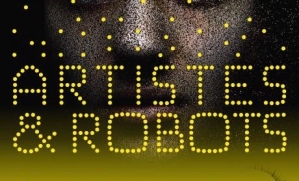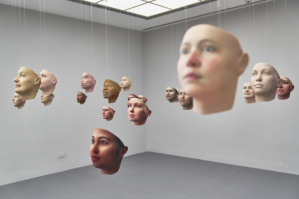About Us
Featured Artist
As an artist, Reas employs ideas explored in conceptual and minimal artworks as focussed through the contemporary lens of software.
Early Selection
News for you
06.06.18
Hello World - Revising a Collection @ Hamburger Bahnhof, Berlin
„Hello World. Revising a Collection“ is a critical inquiry into the collection of the Nationalgalerie and its predominantly Western focus: How might the canon and the art historical narratives themselves have changed through a widening and multiplication of perspectives?
28.04.2018 to 26.08.2018
06.06.18
DIA-LOGOS @ ZKM Karlsruhe
The exhibition »DIA-LOGOS. Ramon Llull and the ars combinatoria« is dedicated to the outstanding Catalan-Majorcan philosopher, logician, and mystic Ramon Llull (c. 1232–c. 1316), whose life and work continue to fascinate a host of thinkers, artists, and scholars today.
17.3. to 5.8.2018
18.04.18
Art That Makes Itself @ CPNAS Washington, D.C.
Paul Brown discovered digital computers as a creative medium after seeing the Cybernetic Serendipity exhibition at the Institute of Contemporary Arts in London in 1968.
Process, Chance, and Serendipity: Art That Makes Itself
February 20, 2018 - July 15, 2018
05.04.18
Artist & Robots @ Grands Palais Paris
This exhibition is an opportunity to experience works of art produced with the help of increasingly sophisticated robots.
05 April 2018 to 09 July 2018
17.03.18
"The Other Trans-Atlantic" Garage Museum of Contemporary Art & Museum of Modern Art in Warsaw
Garage is presenting a major exhibition of kinetic and op art from eastern Europe and Latin America featuring Vera Molnar!
March 17, until May 9, 2018
15.02.18
Frankfurter Kunstverein
I am here to learn: On Machinic Interpretations of the World
15th of February to 8th of April 2018
Explore by Artist
Featured Essay Herbert W Franke
The New Visual Age: The Influence of Computer Graphics on Art and Society
Only a few years ago it would have seemed ridiculous to discuss the influence of computer graphics on art and society. Although computer-generated graphics had already been applied in important areas of science and technology, its influence was not yet felt in the arts or in society at large. Those few who used the computer as an artistic instrument were regarded as outsiders: with their freelance experiments they deviated from the solid ground of strictly defined tasks, but on the other hand found no approval in artistic circles. One of the causes for this lack of approval may have been that they did not submit to the frequently changing fashions which are prevalent in today's visual arts. Rather, they were, at least in the beginning when searching for motifs, guided by mathematical and geometrical aspects. The fact that they succeeded in opening up a largely unknown realm of graphically attractive forms went unheeded by the critics.
At the beginning of its development it was to be expected that the artistic forms of computer graphics would be integrated into the fine arts, but the latest situation leads one to conclude that computer art will develop into a new
field of aesthetically-oriented activity which can neither be classified as part of the existing classical branches of art, nor must it be recognized as art at all. Thus a new profession could emerge as was the case with photography and cinematography. Some parallel developments may result: the latter are, like computers, technical media which permit the realization of artistic goals with unprecedented perfection, using, however, realistic pictures as objects. Such questions which are now being posed in reference to computer art are concerned with more formal aspects: they decide which channels of communication will be accessible to this new field of creativity, which section of the public it will appeal to, how quickly it will spread, and what institutions will be responsible for educating students in this field...![]()






